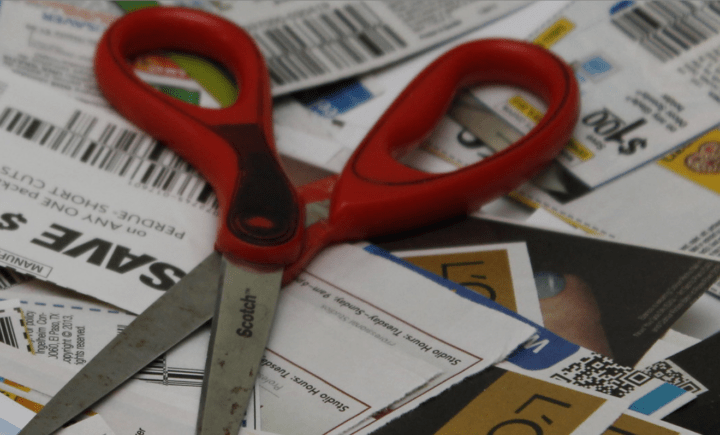
It’s the couponing equivalent of the chicken and the egg – are there fewer coupons available because shoppers are less interested in using them, or are shoppers using fewer coupons because there are fewer good ones available to use?
The market research firm IRI says the coronavirus pandemic has made shoppers less likely to clip paper coupons, but it’s a bit hazy on the reason why.
According to IRI’s latest “Consumer Connect” survey, consumers have unsurprisingly changed some of their shopping and saving habits in the interest of health and efficiency. When compared with survey results from this time last year, IRI found that shoppers are ordering more of their groceries online, they’re buying new, lower-priced brands to save money, and shopping at stores that offer a “quick and easy in-and-out” experience.
And what are they doing less of? Perhaps understandably, fewer shoppers are shopping around for deals. 57% say they frequently or occasionally “visit multiple retailers to keep my grocery bill lower,” as compared to 60% who said the same last year. But the biggest drop-off occurred in the case of coupons. While 60% last year said they frequently or occasionally clip paper coupons from newspaper inserts or store circulars, only 52% said the same this year.
“Consumer habits formed during the pandemic may be here to stay,” IRI predicted, “with consumers reporting they still prefer to shop at fewer stores and are less inclined to clip coupons due to the risk of hand-to-hand contact.”
Wait, is that really why survey respondents aren’t using so many paper coupons? Concerns about contracting the coronavirus by handling paper coupons is a very March 2020 kind of concern. That’s when BJ’s Wholesale Club went so far as to quit accepting paper coupons “in order to reduce touchpoints and help mitigate the spread of coronavirus.” But we soon learned that COVID-19 was much more likely to be transmitted through the air than via contaminated surfaces, so no other major retailer took as drastic a precaution, and BJ’s eventually backtracked.
So could it actually be that shoppers are using fewer paper coupons because brands are issuing fewer of them, and the ones that they are still issuing are kind of lousy?
Kantar’s recent report about coupon distribution in 2020 found a precipitous drop in the number of paper coupons issued last year – 181 billion in total, down more than 15% from the previous year. In percentage terms, that represents the largest-ever single-year drop. The number of digital coupons declined as well, but not nearly as much.
Perhaps more notably, more of those paper coupons were for items that shoppers apparently didn’t want. Back in the day, there were once about an even mix of coupons for food items and coupons for nonfood items. But in 2020, Kantar reported that an all-time low of just 20% of paper coupons were for food – even though survey after survey has found that shoppers want more coupons for products they can feed their family.
So IRI may be reading a little something into its survey results that isn’t really there. “Apprehension about clipping coupons,” it concludes, “has not lessened consumers’ desire for a deal.”
Well, at least that last part is true. Now all we need is for brands to provide the deals that will get shoppers who are “apprehensive” and “less inclined to clip coupons” to happily pull out their scissors again.
Image source: cpyles











Not me! I love my coupons!